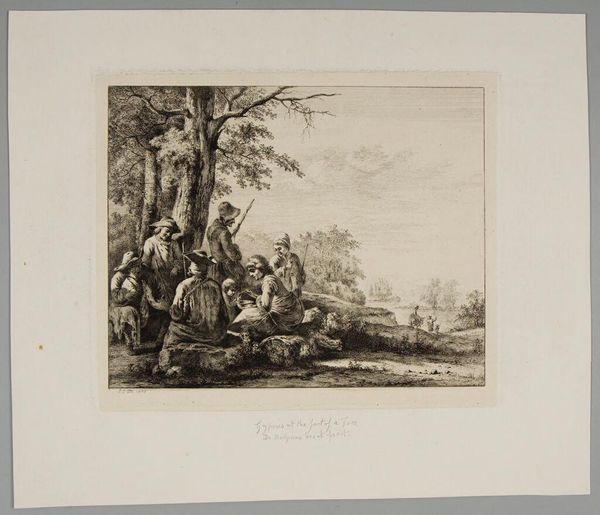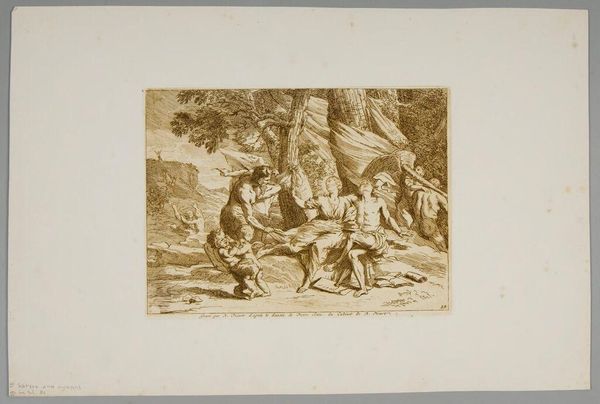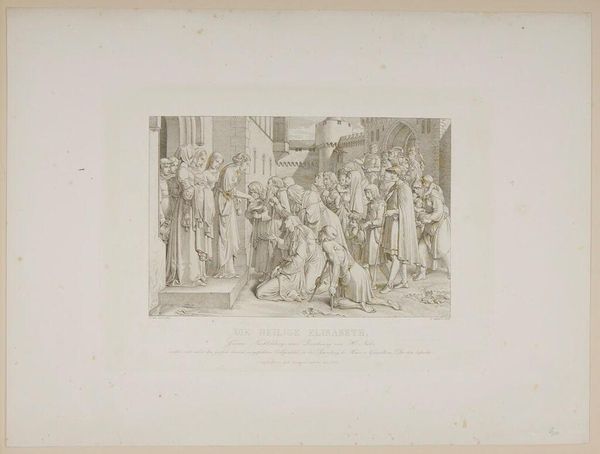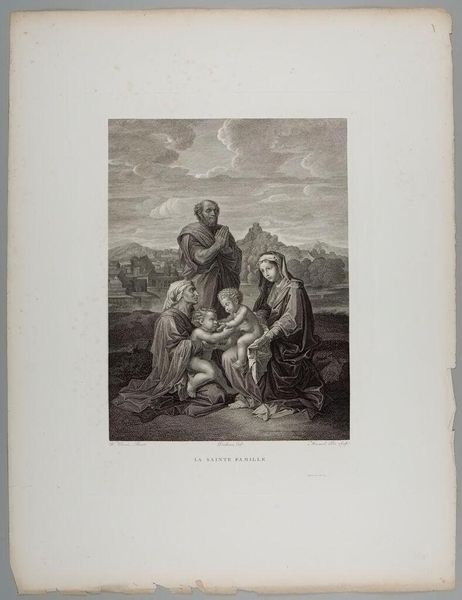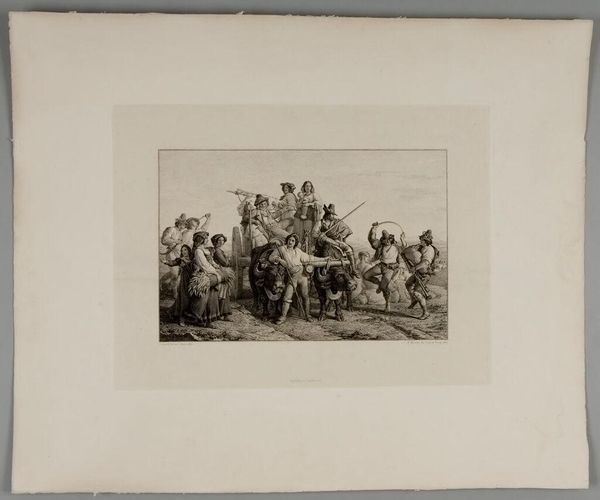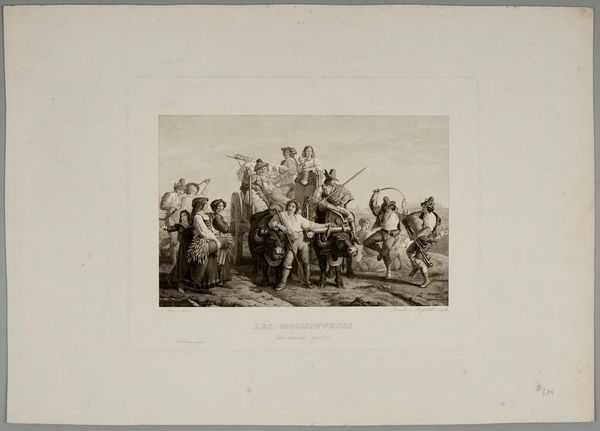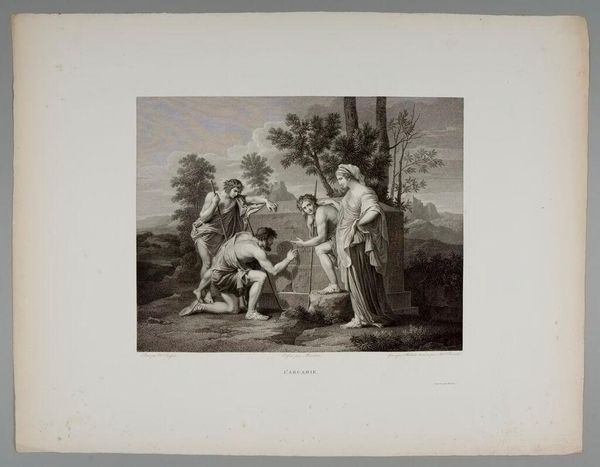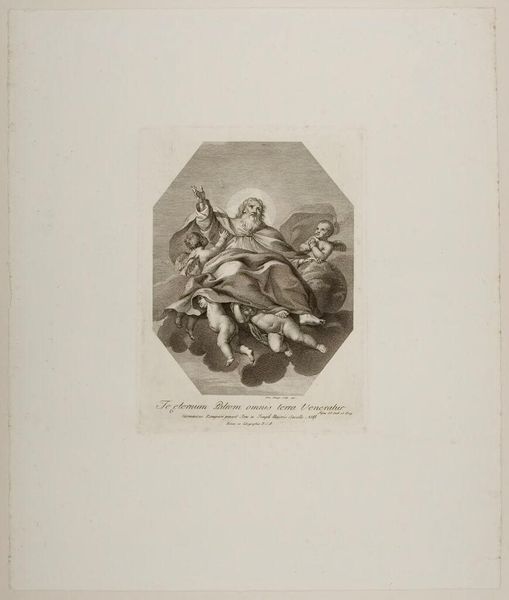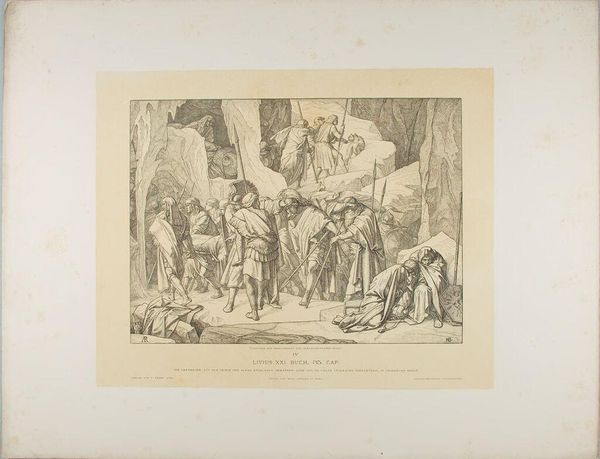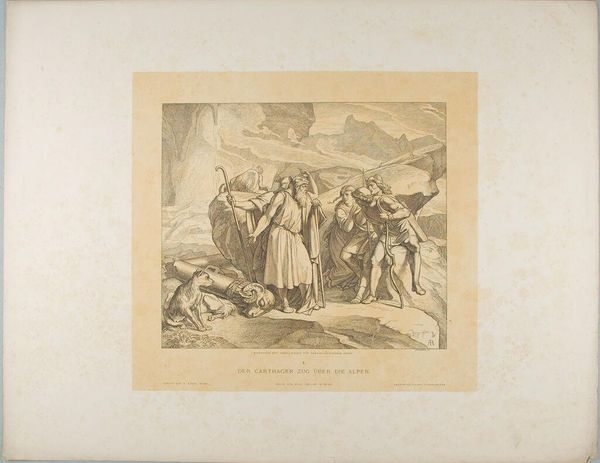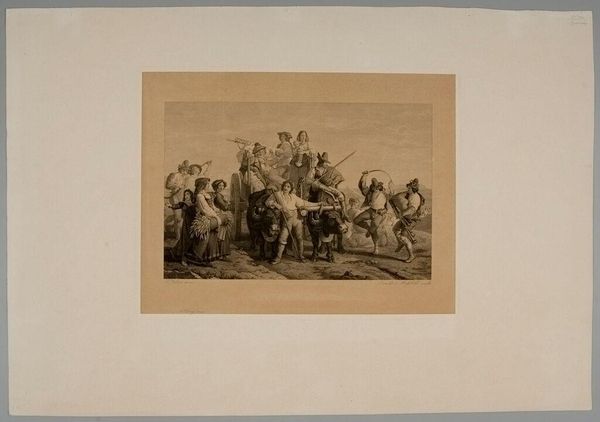
Captive Jews Weeping by the Waters of Babylon c. 19th century
0:00
0:00
Copyright: CC0 1.0
Curator: Ferdinand Ruscheweyh’s print, "Captive Jews Weeping by the Waters of Babylon," presents a tableau of exile. Editor: It evokes a profound sense of grief; the subdued tones and drooping figures create an atmosphere thick with sorrow and loss. Curator: The lyre, usually an instrument of celebration, lies silent, a poignant symbol of cultural suppression and the silencing of voices. The imagery clearly speaks to themes of displacement and collective trauma, doesn't it? Editor: Absolutely, the river itself is a potent symbol, representing both the site of their captivity and the potential for purification and renewal. The women, especially, seem to embody a lament for their homeland. Curator: The image has become symbolic, reproduced over time to represent oppression and resistance to cultural imperialism. Considering the historical context surrounding its creation, we can better understand its lasting resonance. Editor: I agree. This image allows us to reflect on how symbols transmit cultural memory and become vessels for expressing complex emotions across generations.
Comments
No comments
Be the first to comment and join the conversation on the ultimate creative platform.
